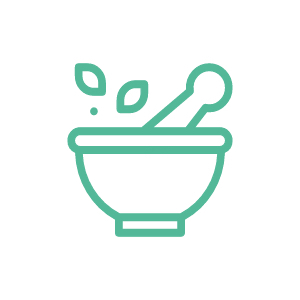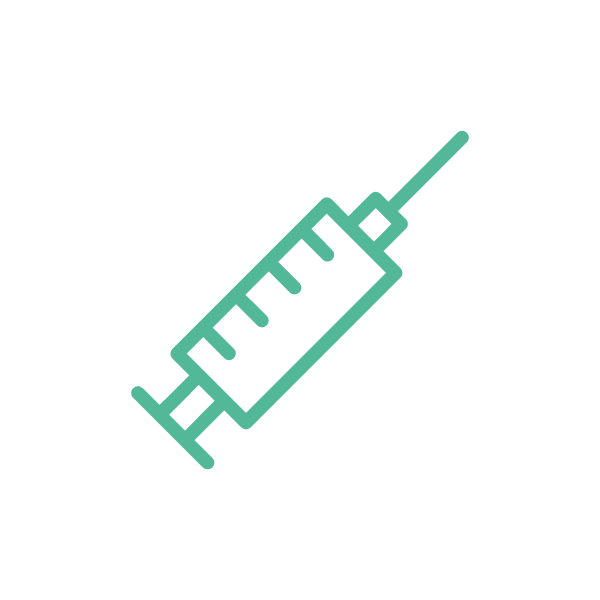Disease management
Acute
In cases of uncomplicated acute cystitis in women, when antibiotics are needed, fosfomycin trometamol, pivmecillinam or nitrofurantoin can be used
- In countries where local resistance rates are below 20%, trimethoprim-sulphamethoxazole is also a valid first-line option
- The combination trimethoprim-sulphamethoxazole has no advantage over monotherapy with trimethoprim, which avoids the adverse effects caused by sulfonamid
- Antimicrobials need to be used carefully as they can damage the beneficial microbiota of the urinary tract.
Symptomatic
Watchful waiting is a viable option
- Anti-inflammatory drugs in conjunction with appropriate patient monitoring, for collaborative patients without underlying complications or other major risks, is possible
- The patient needs to have a solid understanding of the treatment options, good compliance, and access to healthcare services in case of upper UTI
- There is a growing number of studies investigating the efficacy of symptomatic treatment with anti-inflammatory drugs, which allow self-healing instead of eradicating all infecting bacteria with antibiotic treatment
Ibuprofen

In a clinical trial assessing ibuprofen vs. pivmecillinam in women with acute cystitis, 53% of patients in the ibuprofen group recovered without antibiotic treatment.
However, 7 cases of pyelonephritis occurred, all in the ibuprofen group, giving a number needed to harm of 26.
This data indicates that:
- Faster symptom recovery occurs with antibiotic treatment
- Antibiotics may provide better results, however half of patients were cured without antibiotics
- Suitable patients should be better defined to avoid progression to pyelonephritis
Phenazopyridine (pyridium)

- Phenazopyridine (pyridium) is an analgesic which has been used to treat lower UTIs
- No recent or conclusive data currently exists to support its use, however it has been shown to have a good safety profile in clinical trials and is popular among patients
Phytotherapeutic treatment
- A randomized, controlled, phase III non-inferiority clinical trial, compared herbal therapy with BNO 1045 (n=325) to fosfomycin trometamol (FT, n=334) in treating acute uncomplicated cystitis
- 83.5% of patients in the BNO 1045 group and 89.8% of patients in the FT group received no additional antibiotics
- BNO 1045 was non-inferior to FT
- Adverse event rates were similar between groups, but with a higher number of gastrointestinal adverse events in the FT group (27:13) and a higher number of cases of pyelonephritis in the BNO 1045 group (5:1)
There is a rationale for using specific phytotherapeutic agents instead of antibiotics to treat the infection, however evidence is limited, as comparative studies are rare. RECAP
A combined approach using symptomatic treatment during acute episodes alongside prophylactic treatment with immunotherapy is considered a viable management strategy.
Prophylaxis
Identifying the ideal prevention strategy is not easy and should always be performed individually, tailored to the patient’s risk-factors and lifestyle
A certain order and hierarchy of recommendations should be followed when planning the prevention strategy:
What are the current options for prevention of recurrent UTIs according to EAU guidelines?
Lifestyle modifications

Behavioural risk factors, eg sexual activity and form of contraception
Recommended non-antibiotic prophylaxis

Immunoactive therapy
Hormonal replacement (for postmenopausal women)
Other non-antibiotic prophylaxis

- D-Mannose
- Lactobacillus (probiotics)
- Cranberry products
- Ascorbic acid
- Methenamine salts
Antibiotics

- Continuous low dose prophylaxis
- Post-coital prophylaxis
- Patient initiated therapy
Alternative and tolerable options to antibiotics for prevention are needed, to improve clinical outcomes in patients who experience rUTIs, and to reduce the use of antibiotics and the disease burden.
What not to use
The EAU guidelines state that fluoroquinolones, aminopenicillins and cephalosporins should not be used to treat uncomplicated cystitis because of their:
- Negative collateral effects on the vaginal flora
- High resistance rates in the case of aminopenicillins
- Increased selection for ESBL producing bacteria in the case of aminopenicillins
- Restricted indication by the European Medicines Agency in the case of fluoroquinolones
Non-antibiotic methods of prevention should not be misinterpreted as methods of treatment. Sometimes patients and even clinicians have a misconception in this regard. This leads to false expectations about treatment effect of non-antibiotic prevention approaches, like using or recommending cranberry products or OM-89 for treatment of acute infections.
Certain prophylaxis options should be avoided
Antibiotic prophylaxis

Antibiotic prophylaxis should not be applied as a first line prophylaxis, if avoidable
If antibiotic prophylaxis is initiated, the use of fluoroquinolones is not recommended, as it is restricted by the EMA in this indication
Bladder irrigation

Bladder irrigation with antibiotics or antiseptics is not recommended, as there is no proven efficacy of these approaches
Other non-antibiotic prophylaxis

The evidence surrounding other non-antibiotic prophylaxis (e.g D-Mannose, Lactobacillus (probiotics), cranberry products, ascorbic acid and methenamine salts) is contradictory, therefore no recommendation can be made
Cranberry products

The latest Cochrane meta-analysis concluded that cranberry products did not significantly reduce the occurrence of symptomatic infections for women with rUTIs. However, this may reflect the methodological
insufficiencies of the included trials rather than the lack of effect of cranberry





